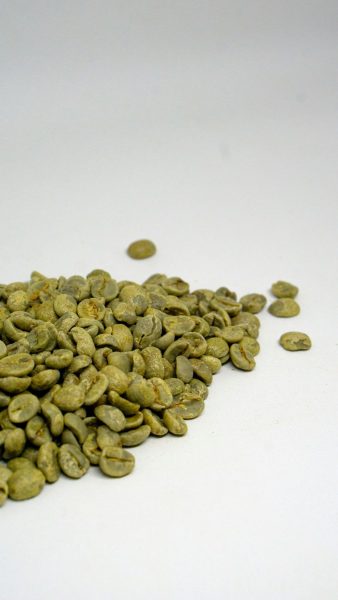
In the southeastern region of Africa, Malawi produces some of the continent’s most distinctive and underappreciated coffee. As specialty coffee enthusiasts continue to seek out unique flavor profiles and origin stories, Malawi coffee beans have begun to capture the attention of roasters and consumers worldwide. This comprehensive guide explores the unique characteristics, cultivation practices, and flavor profiles that make Malawi coffee a surprise gem in the specialty coffee market.
The Rich History of Malawi Coffee Beans
Coffee cultivation in Malawi dates back to the 1890s when British missionaries first introduced coffee plants to the region. Despite this long history, Malawi remains a relatively small producer on the global stage, contributing less than 0.1% of the world’s coffee production. This limited output has kept Malawi coffee beans somewhat of a secret among coffee connoisseurs, though their exceptional quality is increasingly being recognized.
Geographic and Cultivation Conditions
Malawi coffee thrives in the country’s unique growing environments:
- Altitude: Primarily grown at elevations between 1,000 and 2,000 meters above sea level
- Growing Regions: Concentrated in the northern highlands, particularly around the Nyika Plateau and Viphya Mountains
- Soil Composition: Rich, volcanic soils that contribute to distinctive mineral notes
- Climate: Moderate temperatures and well-defined rainy seasons create ideal growing conditions
These natural advantages give green Malawi coffee beans their distinctive characteristics before they even reach the processing stage.
Understanding Malawi Coffee Taste Profiles
When properly roasted, Malawi coffee reveals a complex and balanced flavor profile that stands out from other African origins. While each harvest and processing method yields variations, certain characteristics consistently define the Malawi coffee taste experience.
Primary Flavor Notes
Malawi coffees typically exhibit:
- Bright, wine-like acidity that’s present but not overwhelming
- Medium to full body with a smooth, silky mouthfeel
- Distinct chocolate and caramel sweetness in the base notes
- Subtle floral aromatics, particularly in higher elevation lots
- Complex fruit notes including black currant, plum, and citrus
- A clean, lingering finish with subtle spice hints
These multifaceted flavor attributes make Malawi coffee beans particularly suitable for medium roast profiles that highlight both their inherent sweetness and complex acidity.
Green Malawi Coffee Beans: Processing Methods and Quality Markers
The journey from tree to export significantly influences the final quality of Malawi coffee. Understanding the processing methods employed helps buyers make informed decisions when sourcing green Malawi coffee beans.
Common Processing Techniques
- Washed Process: The predominant method in Malawi, producing clean, bright cups with pronounced acidity
- Natural Process: Less common but growing in popularity, yielding fruitier profiles with enhanced body
- Honey Process: Experimental batches showing promising results with increased sweetness
Quality Grading and Classification
Malawi employs a classification system similar to other African producers:
- AA: The highest grade, featuring large, uniform beans with minimal defects
- AB: Good quality beans with slightly more variation in size
- PB (Peaberry): Single beans that develop within the cherry, often commanding premium prices
- C: Lower grades typically directed toward commercial markets
Premium green Malawi coffee beans are meticulously sorted, with exporters often conducting additional hand-sorting to ensure consistent quality.
Sustainability Practices in Malawi Coffee Production
Sustainable farming practices are increasingly important to both producers and consumers of specialty coffee. Malawi’s coffee sector has made significant strides in this area.
Environmental and Social Initiatives
- Implementation of shade-grown cultivation techniques
- Water conservation practices during processing
- Fair labor practices and community investment programs
- Organic certification becoming more widespread
These sustainability efforts not only improve environmental outcomes but also enhance the quality and consistency of Malawi coffee beans available for sale.
Malawi Beans for Sale: What Buyers Should Know
For roasters and importers seeking Malawi beans for sale, understanding the market dynamics and sourcing options is essential to securing the best quality.
Purchasing Considerations
- Seasonality: Peak harvest occurs between June and September, with fresh crop arrivals typically beginning in October
- Lot Selection: Cupping samples before purchase is highly recommended due to variation between estates
- Direct Trade: Opportunities for relationship-based sourcing are growing, allowing for quality premiums to reach producers
- Volume Availability: While production is limited, consistent partnerships can secure reliable access to premium lots
Popular Malawi Coffee Varieties
- Gesha/Geisha: Recently introduced experimental lots showing exceptional potential
- SL28 and SL34: Kenyan varieties that have adapted well to Malawi’s growing conditions
- Catimor: Disease-resistant cultivars that perform well at lower elevations
- Nyika: A local selection named after the plateau region, known for its balanced profile
Roasting Recommendations for Malawi Coffee
Unleashing the full potential of Malawi coffee beans requires thoughtful roasting approaches that honor their inherent characteristics.
Roast Profile Suggestions
- Light-medium roasts highlight the floral and citrus notes
- Medium roasts balance acidity with chocolate and caramel sweetness
- Medium-dark roasts emphasize body and bring out subtle spice notes
The versatility of Malawi coffee makes it suitable for various preparation methods, from pour-over to espresso, though many specialty roasters prefer highlighting its nuanced acidity through filter brewing methods.
The Bright Future of Malawi Coffee
As global coffee consumers continue to seek out distinctive, traceable coffees with compelling stories, Malawi is positioned to gain increased recognition. The combination of ideal growing conditions, improving processing infrastructure, and dedication to quality positions Malawi coffee beans as an exciting purchase for specialty coffee professionals and enthusiasts alike.
For those seeking unique additions to their coffee program, green Malawi coffee beans offer distinctive characteristics that stand out in a crowded marketplace. The complex Malawi coffee taste profile, combined with growing sustainability credentials, makes these beans a compelling choice for roasters looking to differentiate their offerings with truly exceptional coffees.
